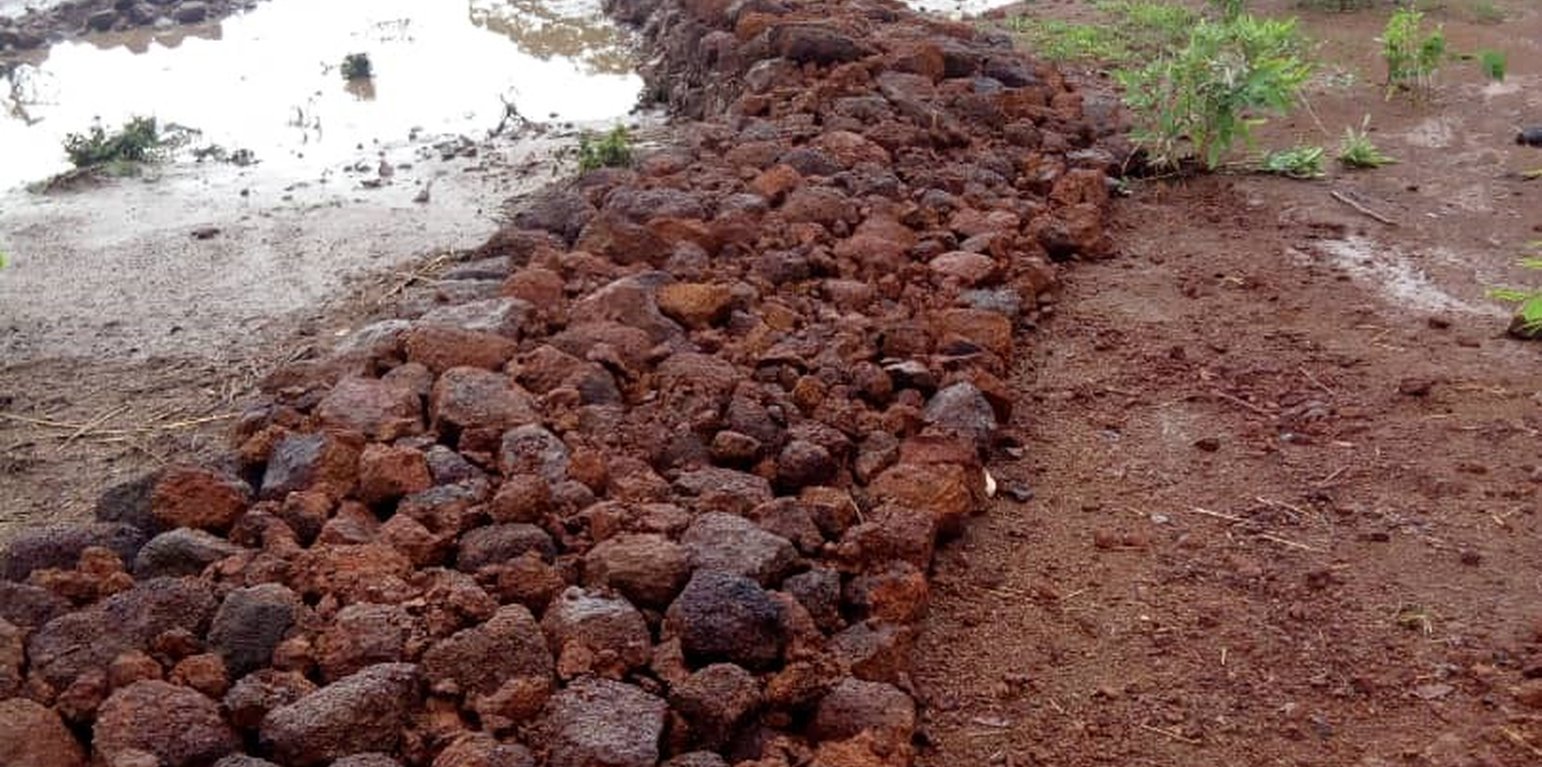



Gully erosion is the removal of soil along drainage lines by surface water runoff when stripped of protective vegetation. If stabilization measures are not implemented, gullies will persist in eroding deeper through regressive erosion or sidewall subsidence, eventually becoming very deep in fragile sedimentary soils. It is much easier and more economical to carry out repair work in the early stages of newly formed gullies. Large, uncontrolled gullies are difficult and costly to repair. Gully treatment is achieved through reducing runoff speed, thus preventing linear soil erosion and the loss of productive land.
Dry stone check dams are well suited to small gullies up to 2 m wide and 1 m deep, with a gentle to medium slope and a medium-soft to hard substrate, and are recommended for cultivated land, reforestation areas, rangelands, etc. But these structures are not suitable for larger gullies, with steep slopes and a very fragile substrate.
The height of each stone check dam depends on local conditions but should never exceed 1.50 m in height. The length depends on the gully's cross-section (width and shape). A check dam’s width should vary according to the volume of water passing through the gully. Wings of stone (higher than the centre point of the check dam) should be securely anchored into gully banks to enhance rigidity and stability and to prevent water flowing around the check dam and creating new gullies to either side.
The purpose of check dams is to slow down water velocity, dissipate its energy, prevent erosion, and induce sedimentation upstream. This process helps reduce the gully slope and facilitates re-vegetation. In the case of deep gullies with filled check dams upstream, another series of check dams can be built to create a stable parabolic section for water passage and re-vegetation with protective species.
This technology makes it possible to control gullying, encourage infiltration and conserve soil moisture, while contributing to groundwater recharge and land reclamation.
The main activities involved in gully treatment are as follows:
•Designing the structure;
•Marking contour lines perpendicular to the gully using a watertube level or an A-Frame;
•Determining the size of spillway (area of origin and estimated volume of runoff);
•Determining the height of the gully and the width of the section to be treated (equal to 2 or 3 times the height of the gully);
•Building the structures;
•Excavating the anchoring trench: dig down to a depth of 10 to 20 cm over the width of the section to be treated (the earth resulting from the excavation is deposited upstream);
•Building the check dam, starting with a layer of gravel, followed by large stones at the bottom, then progressively medium-sized stones and finally small rubble stones;
•Building wings at the sides of the check dams, following the contour line and using small stones and earth-filled sacks.
The inputs needed to implement this technology are soil, stones, gravel and rubble, as well as wheelbarrows, pickaxes, pegs, etc. Experienced manpower is required and access to a vehicle may be needed to transport the inputs.
The technology is suitable for all types of soil and landforms, easy to build and inexpensive, but only if stone is readily available. In addition, it has an immediate impact on the evolution of the gully, correcting the slope and helping reduce flow velocity, thereby controlling the gullying process. It promotes infiltration, conserves soil moisture, contributes to groundwater recharge and reclaims land (especially gully slopes for useful vegetation such as bamboo, vetiver or fodder grasses). It requires maintenance at the start of the rainy season and regular visits to check that it is working properly.
Farmers claim that this technology significantly increases their crop yields through water infiltration and groundwater recovery. However, they acknowledge the substantial financial and human resources required for gully treatment, emphasizing the need for support from development partners for its widespread adoption.
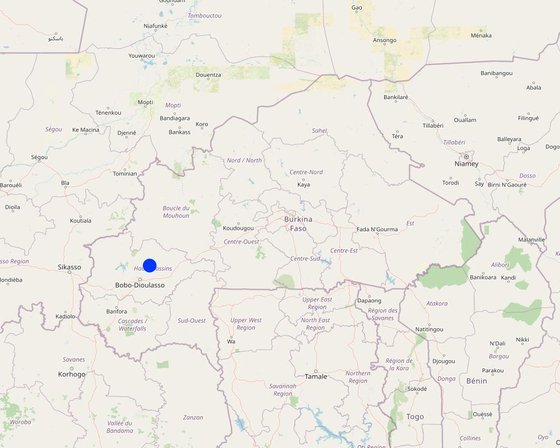
Location: Tiarako (Commune of Satiri), Hauts-Bassins, Houet Province, Burkina Faso
No. of Technology sites analysed: 2-10 sites
Spread of the Technology: evenly spread over an area (approx. 0.1-1 km2)
In a permanently protected area?: No
Date of implementation: less than 10 years ago (recently)
Type of introduction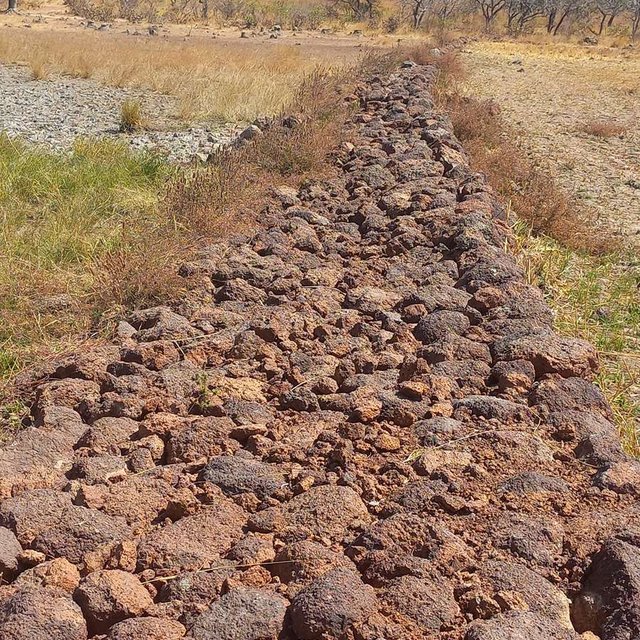
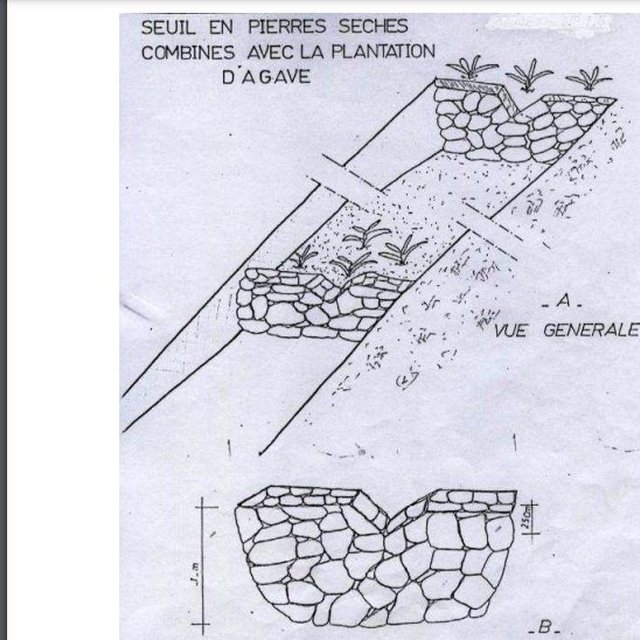





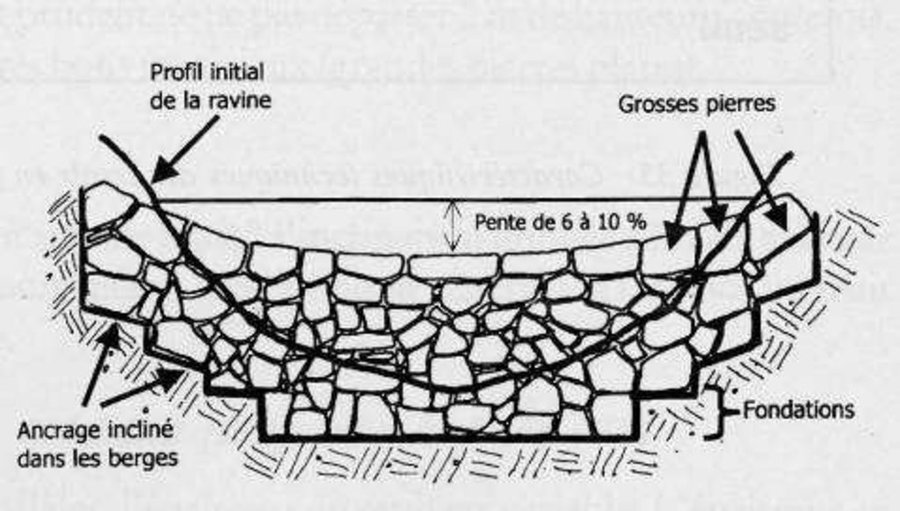
| Specify input | Unit | Quantity | Costs per Unit (n.a.) | Total costs per input (n.a.) | % of costs borne by land users |
| Labour | |||||
| Establishment | Linear meter | 1.0 | 166.67 | 166.67 | |
| Opening of trenches and construction | Linear meter | 1.0 | 4166.67 | 4166.67 | |
| Equipment | |||||
| Small equipment costs | Linear meter | 1.0 | 833.33 | 833.33 | |
| Construction material | |||||
| Purchase of stone blocks | Linear meter | 1.0 | 10000.0 | 10000.0 | |
| Other | |||||
| Monitoring costs | Linear meter | 1.0 | 555.56 | 555.56 | |
| Coordination costs | Linear meter | 1.0 | 277.78 | 277.78 | |
| Total costs for establishment of the Technology | 16'000.01 | ||||
| Total costs for establishment of the Technology in USD | 26.08 | ||||
| Specify input | Unit | Quantity | Costs per Unit (n.a.) | Total costs per input (n.a.) | % of costs borne by land users |
| Other | |||||
| Gully maintenance and repair | Linear meter | 1.0 | 555.56 | 555.56 | 100.0 |
| Total costs for maintenance of the Technology | 555.56 | ||||
| Total costs for maintenance of the Technology in USD | 0.91 | ||||
Quantity before SLM: 15 to 20 bags
Quantity after SLM: 50 to 60 bags
Farmers report that prior to implementing gully treatment, they yielded 15 to 20 bags of maize per hectare. However, following the adoption of this technology, their production has increased to a range of 30 to 40 bags per hectare. This improvement is attributed to a three-year process involving the use of specific seeds, organic fertilizer, and adherence to technical production schedules.
Increased soil organic matter due to sediment deposition results in lower input costs (urea and NPK).
The technology helps dissipate water energy through improved infiltration and enhances sedimentation, thereby increasing soil organic matter for improved agricultural use.